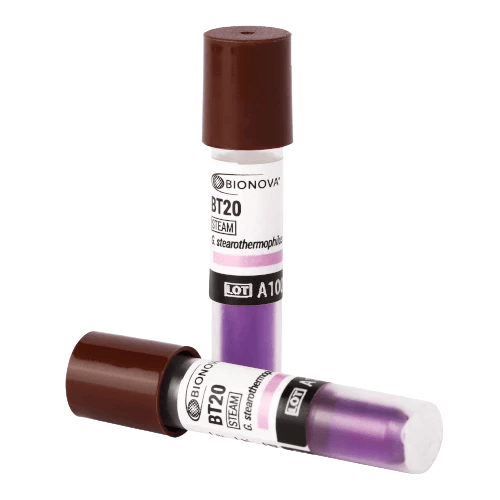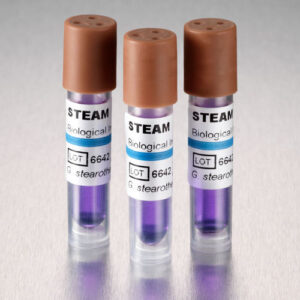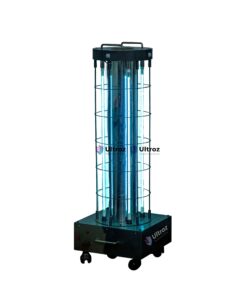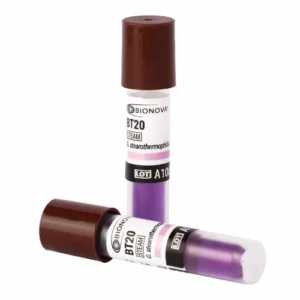In industries where sterilisation is non-negotiable, the reliability of sterilisation validation methods can mean the difference between life and death. Biological indicators (BIs) have emerged as the gold standard for ensuring the effectiveness of sterilization processes, particularly in healthcare, pharmaceuticals, and food production. This article explores why BIs are considered indispensable in critical industries, their working mechanism, and their advantages.
What Are Biological Indicators?
Biological Indicators are test systems that contain viable microorganisms with known resistance to specific sterilisation processes. These microorganisms are placed inside a sterilizer to determine whether the sterilisation cycle effectively kills all potential contaminants.

BIs consist of:
- Spores of Geobacillus stearothermophilus (for moist heat and hydrogen peroxide sterilization) or Bacillus atrophaeus (for ethylene oxide and dry heat sterilization).
- A growth medium that facilitates the detection of surviving spores after sterilisation.
Why Are Biological Indicators the Gold Standard?
1. Direct Evidence of Microbial Kill
Unlike chemical indicators, which only monitor sterilization parameters (like temperature or pressure), BIs directly demonstrate the elimination of viable microorganisms. This makes them a more reliable method for ensuring sterility.
2. Standardised Validation
BIs comply with international standards, ensuring consistency and reliability in testing across industries.
3. Enhanced Patient Safety
In healthcare, where sterility can impact patient outcomes, BIs provide confidence in the sterilisation of surgical instruments, implants, and other critical medical devices.
4. Applicability Across Industries
From hospital autoclaves to pharmaceutical production lines and food packaging units, BIs can validate sterilisation processes involving steam, ethylene oxide, hydrogen peroxide, or dry heat.
How Do Biological Indicators Work?
The process involves:
Placement: BIs are placed in locations within the sterilizer where sterilization is most challenging.
Exposure: The sterilization cycle is run.
Incubation: Post-cycle, the BI is incubated to check for microbial growth.
Results: If no growth is detected, the sterilization process is validated. If growth occurs, the cycle needs re-evaluation.
Modern advancements have introduced rapid-readout BIs that provide results within hours instead of days, increasing efficiency in critical operations.
Advantages of Using Biological Indicators
Accuracy and Reliability
BIs offer unparalleled accuracy in validating sterilization cycles, ensuring compliance with regulatory standards.
Time-Efficiency with Rapid-Readout Options
The introduction of rapid-readout BIs allows critical industries to achieve faster turnarounds while maintaining accuracy.
Cost-Effectiveness in the Long Run
Though initially more expensive than chemical indicators, BIs reduce costs associated with failed sterilization cycles and contaminated products.
Applications of Biological Indicators
1. Healthcare
In hospitals, BIs validate sterilization of surgical instruments, ensuring patient safety.
2. Pharmaceuticals
BIs are used to confirm the sterility of drug manufacturing environments and equipment.
3. Food Industry
From canning to vacuum-packed goods, BIs validate sterilization processes to ensure food safety and compliance.
4. Biotechnology and Laboratories
BIs validate sterility in cleanrooms and during the production of vaccines, ensuring contamination-free results.
Common Challenges and How BIs Address Them
1. Complex Device Sterilization
Sterilizing intricate devices like endoscopes can be challenging. BIs ensure these devices meet sterility standards by being placed in hard-to-reach areas during validation.
2. Diverse Sterilization Methods
Industries often use various sterilization methods. BIs provide flexible solutions by accommodating different sterilization types.
3. Regulatory Compliance
Failure to meet sterility standards can result in severe penalties. BIs help industries comply with stringent regulations, protecting businesses from legal risks.
Conclusion
Biological Indicators are more than just tools; they are vital safeguards in industries where sterility is critical. By directly validating sterilisation efficacy, BIs uphold the highest standards of safety, compliance, and efficiency. For industries like healthcare and pharmaceuticals, investing in reliable sterilization validation through BIs is not an option but a necessity.
Frequently Asked Questions (FAQs)
1. Why are Biological Indicators important in healthcare?
Biological Indicators ensure surgical instruments and devices are free from harmful microorganisms, reducing the risk of infections in patients.
2. How are Biological Indicators different from Chemical Indicators?
While chemical indicators measure sterilization parameters like temperature, BIs confirm the actual elimination of microorganisms, making them more reliable.
3. What are rapid-readout Biological Indicators?
Rapid-readout BIs provide sterilization validation results within hours, significantly reducing turnaround time without compromising accuracy.




